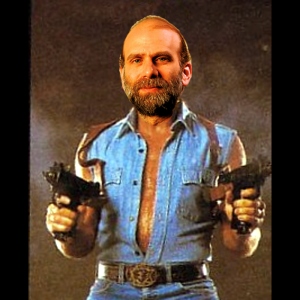Honey, I’m Dead
In the Caucasus, a Bronze Age site hints at embalming with honey.
Tbilisi, Georgia, 41°41'48" N, 44°48'01" E
Three years ago, on the banks of the Alazani River in the former Soviet republic of Georgia, the archaeologist Zurab Makharadze cut into a 40-foot-high burial mound that bulged above the surrounding green farmland.
“One of our botanists noticed it first,” Makharadze said of the odor wafting up from some of the unearthed artifacts. “She was in the laboratory, working her microscope. She was analyzing samples. She started smiling.”
The samples, in this case, were wild berries—offerings left for the entombed dead. Their aroma: thick and intensely sweet, but with musky undertones, with hints of molasses. The berries were astonishingly well preserved. They were still red. They were 4,300 years old. They had been carefully cured with ancient honey.
Other items found inside the Bronze Age grave site, called Ananauri 3, were far more spectacular: In a collapsed burial chamber built of logs sat two full-size wagons, complete with ox yokes (domesticated horses had yet to arrive in the south Caucasus during this remote era); beautiful golden jewelry; amber beads traded either from the Baltic region or India; and a trove of astonishingly intact textiles, leather, and basketry. Whoever lay buried inside the mound had been an important chief or religious leader. Six other bodies were interred with him, possibly slaves. Ananauri 3 will add richly to our knowledge of an obscure people called the Martkopi and Bedeni, who farmed grains and raised cattle in the waning centuries of a vast Transcaucasian civilization known as the Araxes-Kura culture. But what struck me, as Makharadze laid out his immensely old treasures on a table at the Otar Lordkipanidze Archaeology Center in Tbilisi, was a delicious biological grace note: The task of archaeologists has been assisted by prehistoric bees.
“Wet clay kept many of the artifacts from rotting,” said Makharadze, a big, shy, red-faced man with a bull chest and the square jaw of a boxer. “But these people used honey to embalm many burial objects. They knew what they were doing.”
Not only the wild berries—ground cherries—but also bushels of other ceremonial offerings in the tomb, such as hazel nuts, were slathered in honey. So were wicker baskets of chestnuts. Even some of the weavings and other organic perishables may have been honey coated. This was done to supply the souls of the departed with all the sustenance and tools they would require in a better world.
Walking for more than two years north from Africa into the Middle East, and then east from Turkey into the Caucasus, a key caloric ingredient of this strange journey has been local honey. In hot Arabia, I ate desert honey as clear as air. In the icy mountains of Anatolia, I ate old, crystallized honey that looked like snow. Packed with energy, honey is a walker’s rocket fuel. I also know it makes a good ointment against burns.
Honey, of course, has been touted for millennia as a cure-all.
“It causes heat, cleans sores and ulcers, softens hard ulcers of the lips, heals carbuncles and running sores,” wrote Hippocrates, the Greek clinician, in the fourth century B.C.
Less well known are its mummifying powers.
Honey’s extremely high sugar content acts much like salt: It sucks water from bacteria, essentially drying the microbes to death. Honey also contains small amounts of hydrogen peroxide, which of course is antiseptic. Slather honey on wild berries, then, or on nuts, and you create the perfect afterlife snack—food with a shelf life that is eternal. The same applies to corpses. Herodotus noted that the ancient Assyrians embalmed their dead in honey. And after he died in 323 B.C., Alexander the Great was reportedly immersed in a golden sarcophagus brimming with honey. His subjects wanted to keep him presentable for public display.














